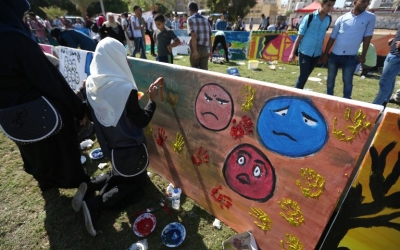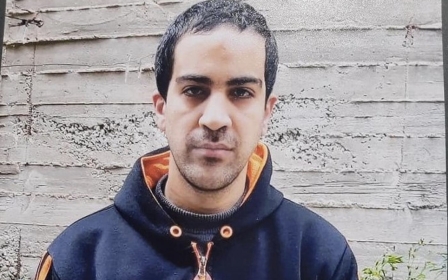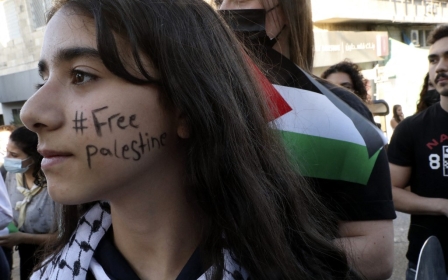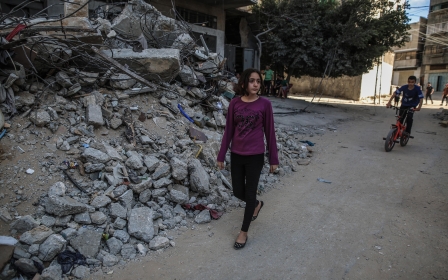Israel kills Palestinians with mental illness through impunity. My cousin-in-law was one of them
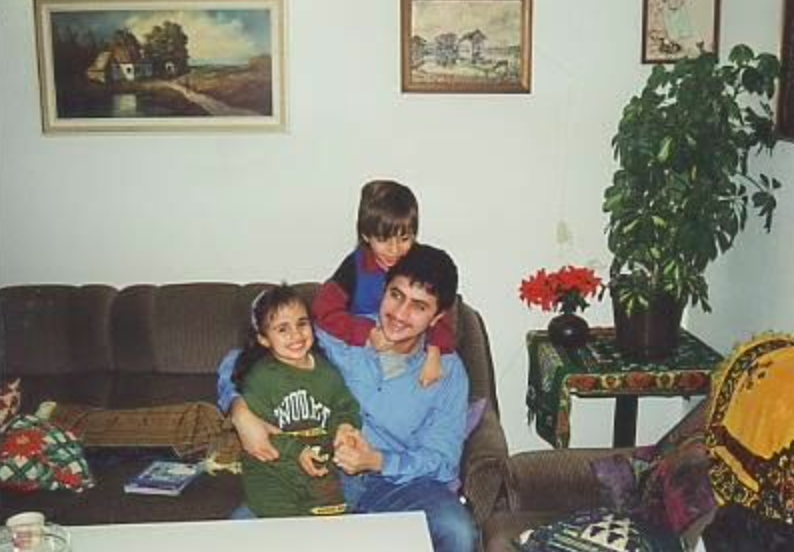
On 30 May, it will be one year since Israeli border police killed Iyad al-Halak, an autistic Palestinian man. The police claimed that Halak had an “object that looked like a pistol” and ran away when ordered to stop. Halak was unarmed.
Halak attended and worked at a special needs facility in Jerusalem's Old City, metres from where he was shot. Israeli police started chasing him after they suspected he was a terrorist “because he was wearing gloves”. While Halak was trying to hide behind a large rubbish bin, fearing for his life, Israeli police shot and killed him.
The killing of Palestinians with mental illness is not unusual for the state of Israel. After the recent 11-day Israeli assault on Gaza - which killed at least 248 Palestinians, including 66 children and 39 women, and injured hundreds more - Palestinians have held their breath while searching for the missing.
No one could alert his family, and his body lay there for more than a week - all because he could not access his medications, and because Israel categorises every Palestinian as a 'terror threat'
One of the victims, Muhannad Tawfiq Abdelhadi, was my husband’s first cousin. He was found dead in an open area east of Gaza City, near the border fence. Muhannad was not killed by an air strike or the impact of a bomb; he was shot by Israeli soldiers in cold blood.
Muhannad lived with various conditions, including schizophrenia and depression. When on medication, he was alert and available to his family and only son. Without his medication, though, Muhannad was often confused, known to wander through his neighbourhood of Khan Younis - although his family always eventually found him.
New MEE newsletter: Jerusalem Dispatch
Sign up to get the latest insights and analysis on Israel-Palestine, alongside Turkey Unpacked and other MEE newsletters
When eyewitnesses saw Muhannad, a young man walking towards the demarcation line and killed by an Israeli sniper, it was too dangerous to retrieve his body. No one could alert his family, and his body lay there for more than a week - all because he could not access his medications, and because Israel categorises every Palestinian as a “terror threat”.
'A beautiful soul'
Muhannad developed his conditions later in life, when he was studying engineering in Germany. Although he had a bright future, social isolation and the troubles of being an immigrant forced him to return to his home in Gaza.
My husband, Abdallah Abdelhadi, recalls that Muhannad “was the kindest older cousin you can have, and yet Israel killed a beautiful soul that was battling his mental illnesses and trying to support his family and his three-year-old son”. Abdallah added: “He wouldn’t hurt anyone. Just, why? What did he do for them to see him and kill him like that?”
The indiscriminate killing of Palestinians, particularly in Gaza, does not even spare traumatised children. Eleven of the children killed in Gaza this month were receiving trauma counselling to help them deal with life in a state of continuous war. More than two-thirds of children in Gaza experience psychological distress, as the mental-health crisis in the besieged enclave continues to grow.
In one example, 22-year-old Fathi Harb went to a Great March of Return protest in 2018, counting on the indiscriminate killing of Israeli snipers to fatally shoot him. He was, it seems, trying to bring about his own death. When he was not killed by snipers, he set himself on fire on a busy street in Gaza City.
The conditions of Gaza’s military siege and Israeli assaults every few years have exacerbated the territory’s mental health crisis. The Gaza Community Mental Health Programme has reported growing numbers of cases of anxiety, depression and suicide.
Cleared of wrongdoing
Beyond Gaza, this past February, Israeli police killed Munir Anabtawi, a Palestinian man with mental illness in Haifa. Anabtawi reportedly had a psychotic episode after an argument with his mother, who tried to call an ambulance but accidentally dialled the police, whose arrival led to her son’s death. The police officer said that he acted “out of genuine concern for his life”.
“Why five bullets? Fine, give him one. He’s down. But one, and another, and another and another. They neutralised him,” the victim’s brother told Channel 12 in March, accusing police of having “assassinated” Anabtawi. The officer involved was cleared of wrongdoing by Israel’s justice ministry earlier this month.
This is not a police brutality problem; it is an Israeli state problem. The blanket categorisation of Palestinians as terrorists goes far beyond Israel’s police forces. The Israeli army on Twitter deemed its latest assault on Gaza to have been a success, labelling the slain Palestinians as “200+ terrorists neutralised”. That number presumably includes Palestinians who are vulnerable or who have mental health conditions, such as Muhannad Abdelhadi. Israel can kill those with mental illness with impunity.
May you rest in peace, Muhannad, along with every other Palestinian with mental illness who has been victimised by Israel’s brutal military occupation. Whenever we say “Free Palestine”, we will remember your beautiful lives - and work to ensure this never happens again.
The views expressed in this article belong to the author and do not necessarily reflect the editorial policy of Middle East Eye.
Middle East Eye delivers independent and unrivalled coverage and analysis of the Middle East, North Africa and beyond. To learn more about republishing this content and the associated fees, please fill out this form. More about MEE can be found here.




